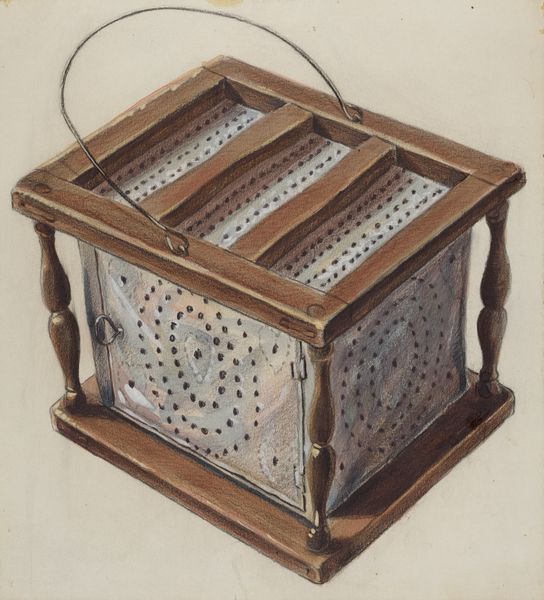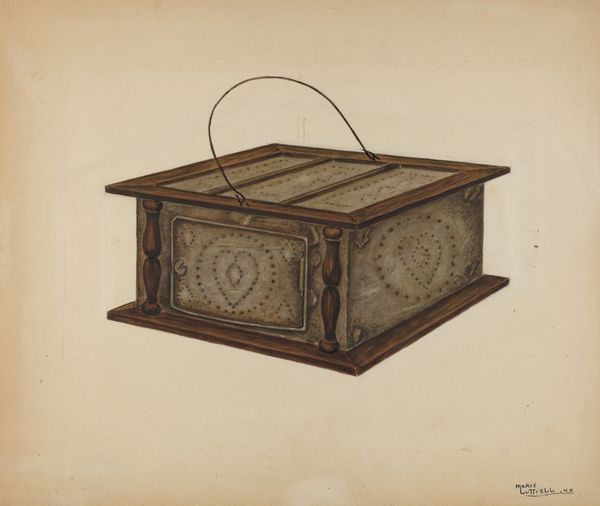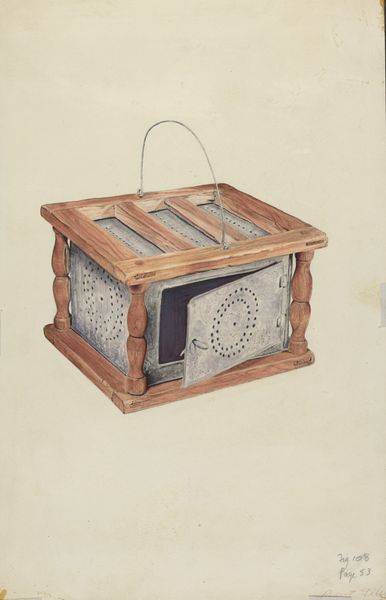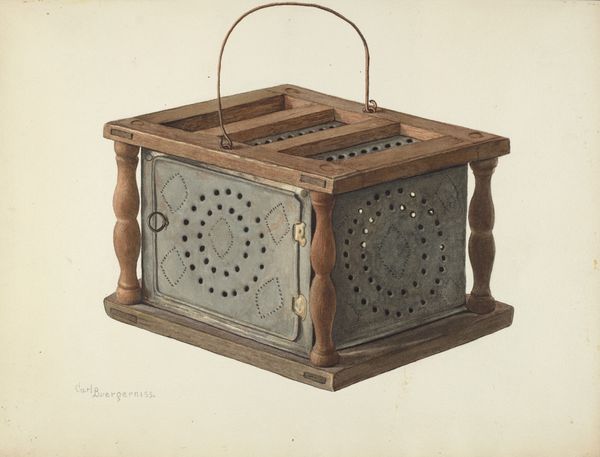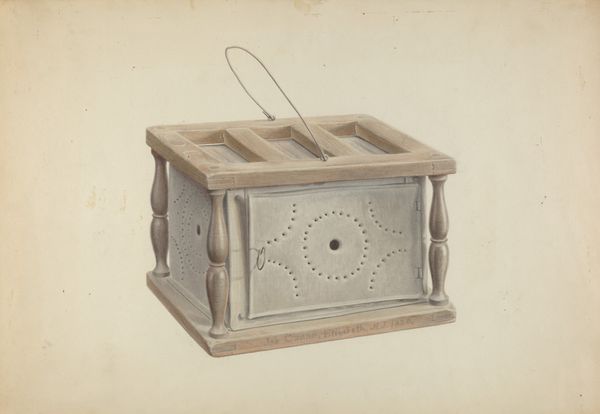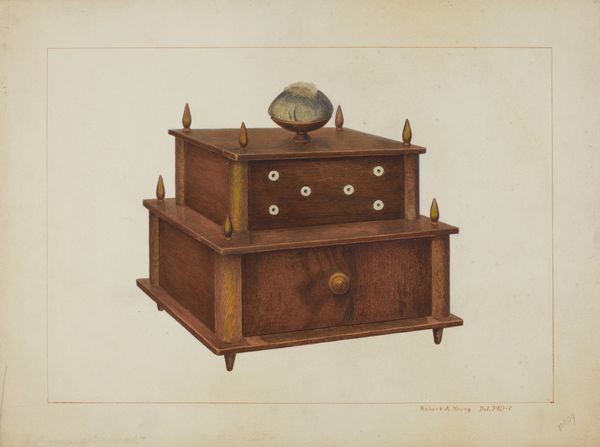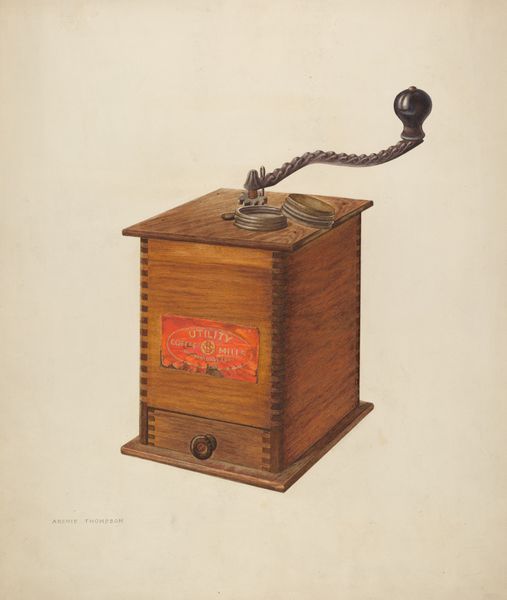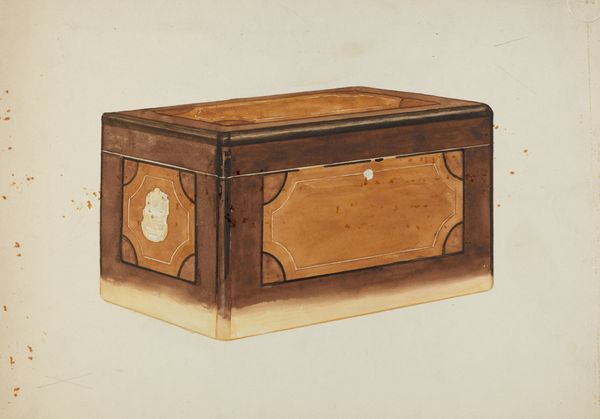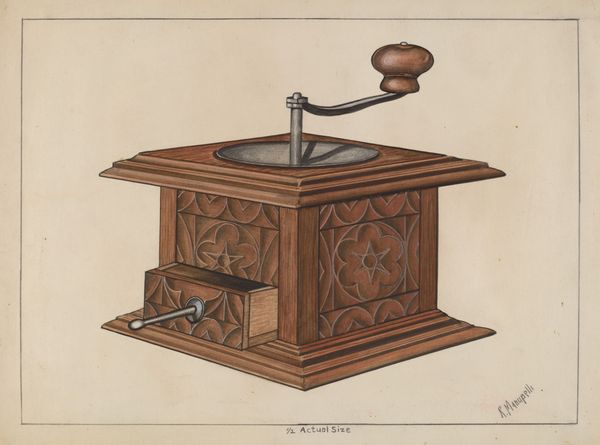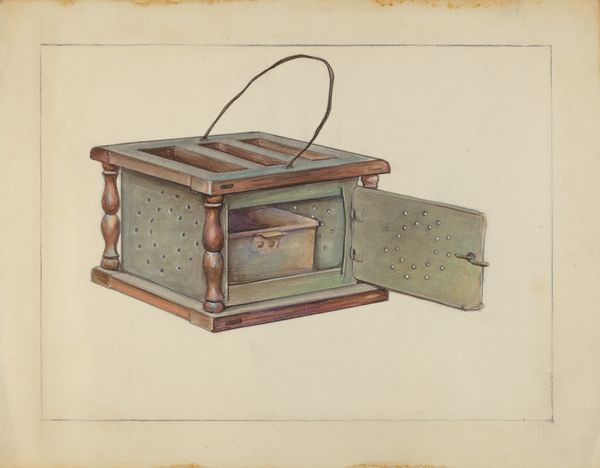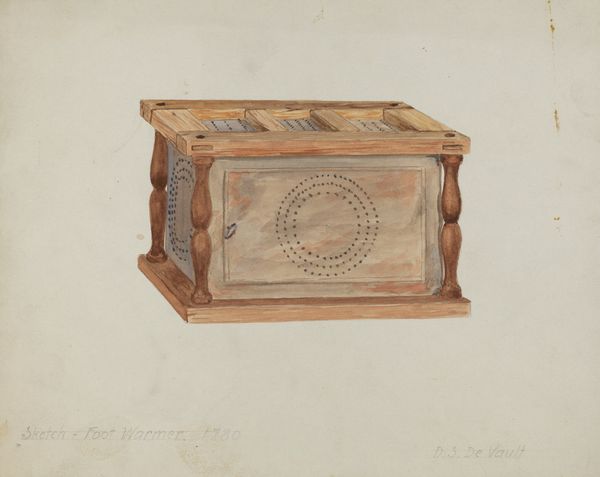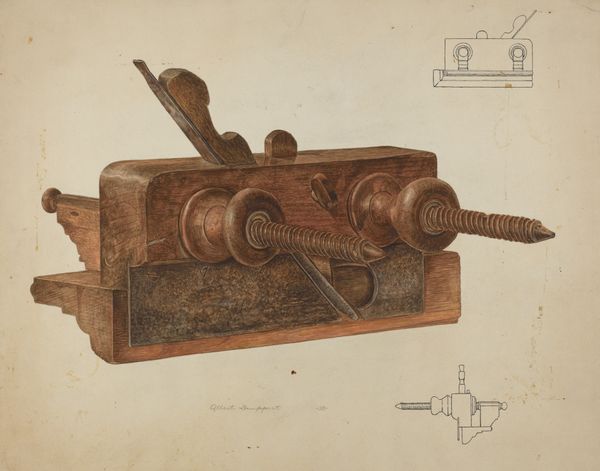
drawing, graphite
#
drawing
#
charcoal drawing
#
folk-art
#
graphite
#
watercolour illustration
#
graphite
#
watercolor
#
realism
Dimensions: overall: 27.2 x 35.6 cm (10 11/16 x 14 in.) Original IAD Object: 6" high; 8 1/2" wide; 9" deep
Copyright: National Gallery of Art: CC0 1.0
Curator: Here we have "Foot Warmer," a work created circa 1937 by William Paul Childers. It appears to be a mixed media piece, employing graphite, charcoal, and watercolor or similar washes. The subject is a utilitarian object elevated through artistry. What are your initial impressions? Editor: There’s a tenderness in this image. The object itself, a foot warmer, suggests comfort and care. The rendering is so precise, so lovingly detailed—look at the light catching the punched tin, those little heart motifs! It speaks to me of someone finding beauty in the everyday. Curator: Precisely. And note how Childers renders the object almost clinically, head-on, emphasizing its construction. He emphasizes not just the tin, but the joinery of the wooden frame and legs. It evokes a specific historical context; the artist created these drawings as part of the Index of American Design, a New Deal project. Editor: Yes, that WPA connection is crucial. These artists were tasked with documenting vernacular design, essentially creating a visual archive of American material culture during a period of great economic and social upheaval. These weren’t just objects; they were symbols of resilience and resourcefulness. Curator: This foot warmer, likely from an earlier period, is now being memorialized and validated by a government initiative during the Depression. What was once ordinary becomes extraordinary through the act of documentation. There is a subtle shift here in power dynamics; whose stories get told, who defines culture, whose work gets saved? Editor: It complicates the narrative of folk art. It’s easy to romanticize the ‘authenticity’ of rural craft, but the WPA project imposed a structure of value and attention. Were the makers of these foot warmers consulted in the project? It raises questions about cultural appropriation and the gaze through which these objects are seen. Also, this type of piece was largely found in white homes. Considering the New Deal's policies often left Black people out, who benefited from this archival project? Curator: Absolutely. Consider the racial and class dimensions. This drawing preserves a material history, but also a record of the priorities—and blind spots—of its time. Editor: So while I’m drawn to the inherent beauty and the quiet craftsmanship displayed in this watercolor and graphite representation, it’s essential to unpack the layered meanings embedded in the work’s creation and its place within a larger social framework. Curator: A beautiful reminder to consider art beyond its aesthetic appeal, probing its complex intersections with power and history. Editor: Exactly, engaging with both its visual allure and its social significance enriches our understanding of this beautifully simple object.
Comments
No comments
Be the first to comment and join the conversation on the ultimate creative platform.
